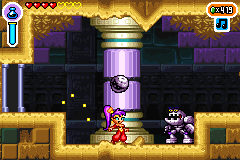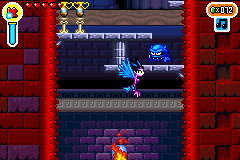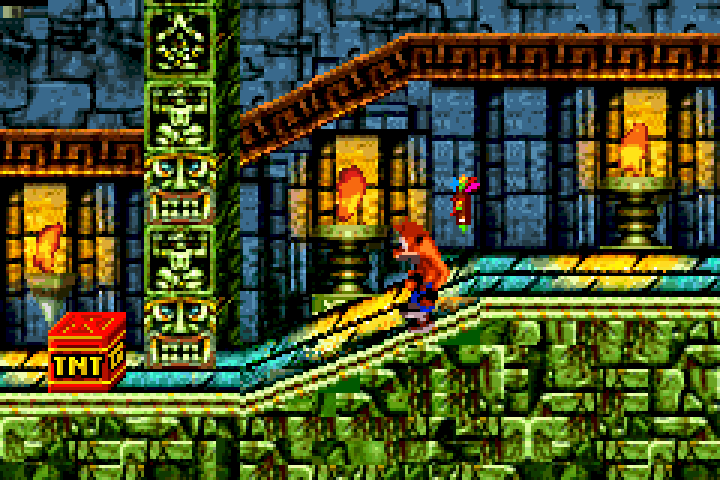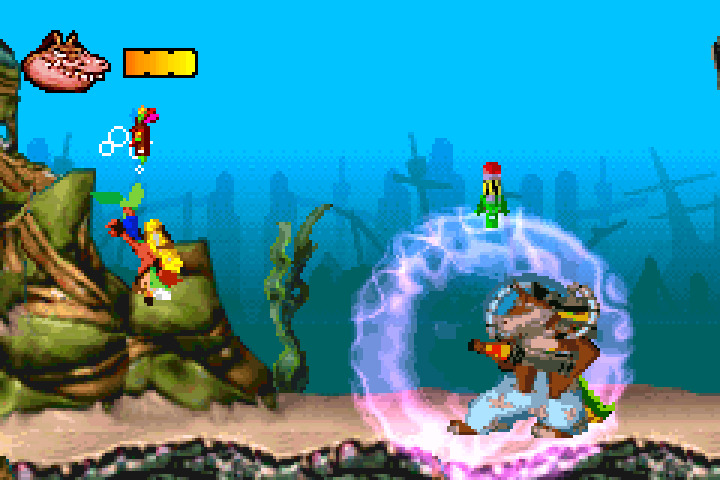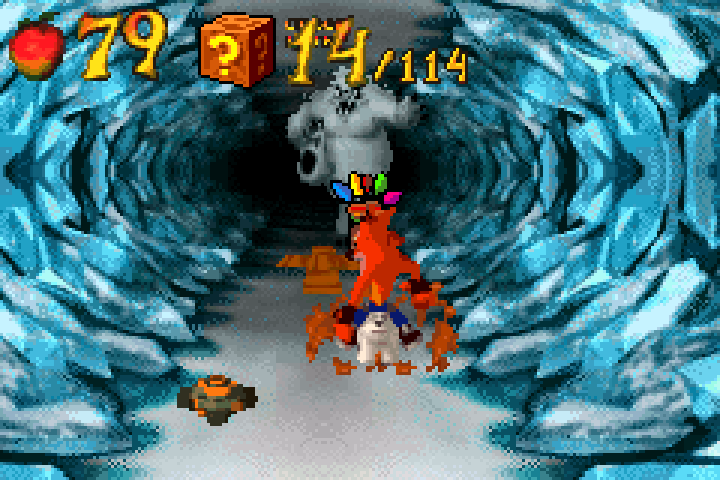- Genre: Platformer
- Platform: GBA
- Also Available On: Switch, PS4, PS5, Steam
It’s interesting playing a new GBA game that clearly benefits from lessons learned over 20 years of making games. While this is an “old” game revisited and completed it’s clearly been given a modern touch. This is simply a great game on GBA rather than a great GBA game and that modern feeling is surprising, even knowing how good this series has been.
Looking at this purely from a Shantae perspective, this leans a lot more toward the level focused gameplay of older titles than that of Seven Sirens but that makes a lot of sense. This was supposed to fall in between the original and Risky’s Revenge. It certainly has some Metroidvania elements like hidden treasures, upgrades, and small segments of paths that require revisiting areas. However, the focus is on core platforming gameplay and it is smooth.
The thing that I often find difficult about going back to a lot of older games is that they dealt with a lot of platform restrictions via brute force, and that often meant that there is jank or slowness built into the experience. You’ll sometimes see if with weird air control or slow movement in platforming gameplay. You’ll see it in slow usability of menus. You’ll see it in extreme levels of not explaining what the player should at least be trying to do. None of that is present here.
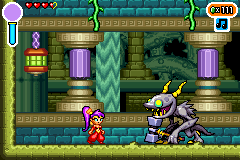
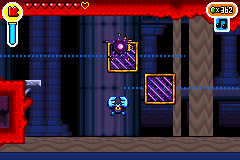
It’s a series of really small things, but movement here feels modern. In regular platforming movement is really fast. Normally I would expect that the limited screen space of the GBA would be a hazard here, but this is paired with what is really one of the best visual styles of any game I’ve played on the platform. Importantly, the thing that makes it work is that distinguishing enemies from the background at a glance is immediate so you don’t have to slow down to avoid danger. You run quickly, dispatch enemies quickly, and move on. This is paired with the movement being similarly smooth in transformations – climbing on spider webs is super agile, flying as a harpy is fast, wrecklessly dashing as an elephant removes a lot of danger – so that no matter what movement you’re in you just kind of intuitively go at it.
This bunch of little things also goes straight into overall UX. Transformations are linked to B+<something> combos and are super snappy, so you can switch to the right transformation quickly. Switching between magic types is fast and quick to use despite the overall lack of button options. There’s a whole upgrade path that you can steer your play time through, but they’re all obvious in terms of their use – some are power curve upgrades while some are simply ease of use, such as a purchaseable money multiplier. Talking to characters in the world is the primary way of getting clues about what to do, so it’s both not hand holding but also not vague. If you want to simply explore you can, but you can also be given instructions if you choose to dig for it. The primary meta game mechanic involves changing the background and foreground layers and moving between them, and that again is super fast but flashy enough to be impressive every time. Basically, it all feels like something that would be incredibly in-place in a modern retro-styled title, but as something played on GBA hardware is even more impressive.
That’s not to say that this is an all timer or anything though. While the original Shantae was unbelievably good for its time and this released 20 years ago would have been up there, we’ve seen a lot of progress since then. Where this falls is somewhere along the lines of really good game that is elevated by nostalgia and the reality of the platform it’s on, but on modern platforms it’s probably more of a curiosity for fans of the series. It doesn’t really do anything new or interesting now so separate from the story of its development delays and original cancellation it doesn’t necessarily stand out from the crowd.
But boy could I think of games that are far worse.

